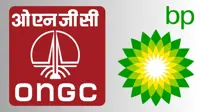Government looks to check surging royalty outflows
28 Apr 2014
The government proposes to check the rising outflows of foreign exchange in the form of repatriation of royalty payments by multinationals such as Hindustan Unilever, Nestle, Siemens and Maruti Suzuki to their respective parent companies.
Official data showed that repatriation of royalty payments from the country equalled or exceeded 18 per cent of all foreign direct investments into the country in 2012-13, compared to 2009-10 just 13 per cent.
With cumulative foreign investments of $200 billion, the annual outflows could be anywhere around $36 billion.
The government, which had lifted the cap on royalty payments and had allowed lump sum payment of royalty fee with effect from 16 December 2009, could re-impose caps on outflows or tax royalty payments.
Moreover royalty payments overseas under technical collaboration agreements were exempt from seeking approval of the ministry of commerce and industry.
Repatriation of lump sum fee for transfer of technology and payments for use of trademark/brand name is allowed on the automatic route.
The government has so far not taken any decision on the matter until now, fearing that it will impact investments.
In its enthusiasm to attract foreign investment the finance ministry probably showed little concern for the need to control surging outflows in the form of royalty payments.
Amitabh Kant, secretary, Department of Industrial Policy & Promotion (DIPP), is clearly of the view that the amount of royalty outflows needs to be controlled as per global practices.
''Fair royalty is okay. But unlimited royalty is not. We will see what action we can take ourselves,'' Business Line quoted him as saying.
The DIPP is working with the finance ministry to have more clarity on the quantum of royalty outflows and also work out a way forward.
The commerce ministry is reported to have raised concerns about the sharp rise in the outflow of royalties from the country with the finance ministry in late 2013.
However, with its focus on boosting investor sentiment, the finance ministry did not take any action so far fearing such action could have an adverse impact on investments.
Royalty payments in India were capped at 5 per cent of domestic sales in the case of technical collaboration and 2 per cent for the use of a brand name and trademark till April 2010. This was removed with retrospective effect from December 2009, to make the country more attractive to foreign investors.
The move only resulted in a sharp rise in outflow of royalty payments.

.webp)
.webp)

.webp)

.webp)


























